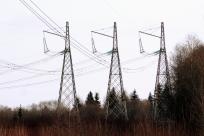 What Impedes TransmissionApr 14, 2010 - Bill Opalka - renewablesbiz.com
I recently spoke to Ed Krapels, a developer of energy transmission projects and founder of Anbaric Transmission, who added another "transmission killer." Well, it's not exactly his - he borrowed it from regulatory expert Scott Hempling - but "interconnection animus" is a way to describe the difficulty of getting multi-state projects approved by state regulators. As his is a Boston-based company, Krapels knows how especially difficult project development can be in crowded areas of the Northeast. He is a principal of the Neptune Project, a 660 megawatt HVDC tie between New Jersey and Long Island, and the Hudson Project, a proposed line between New Jersey and Manhattan. "We're looking to build interconnections between the independent system operators," Krapels said. "We believe there should be a more regional approach among the states." Of course, for renewable energy to become a more robust part of the generation portfolio, transmission projects that bring remote resources to load centers almost without exception will cross state lines or traverse the territories of multiple utilities. Instead, states create barriers and discourage regulators from moving electricity outside their borders. If society has decided renewable energy serves a greater good, then states need to cooperate regionally to provide economic benefits to the communities where the resources come from, Krapels said. "There are 600 to 800 megawatts of wind power that could be developed today in northern Maine to serve Boston, but won't be built with the current system," he said. Is there a solution? Krapels said there has to be a major shift in the mindset of the Federal Energy Regulatory Commission (FERC). He said FERC needs to stop treating transmission like generation assets and instead like infrastructure that will last for decades. Interconnection costs should be rate-based under this model, a view Krapels said has not been well received when he discusses it. Interestingly, Krapels thinks siting is the easiest to solve. If so, then local opposition has nothing on the institutional barriers that exist today. The editorial staff at RenewablesBiz.com is passionate about exchanging ideas and dedicated to promoting ongoing conversation about renewables and sustainable energy issues. We invite you to join and contribute to our online community. If you have an idea for an article or editorial contribution, please contact me via email, bopalka@energycentral.com, or phone, 860.633.0090. |
Email this page to a friend
If you speak another language fluently and you liked this page, make
a contribution by translating
it! For additional translations check out FreeTranslation.com
(Voor vertaling van Engels tot Nederlands)
(For oversettelse fra Engelsk til Norsk)
(Для дополнительных
переводов проверяют
FreeTranslation.com )


 Talk about the difficulties of building transmission and just about everybody agrees the twin killers of any project can be siting and cost allocation.
Talk about the difficulties of building transmission and just about everybody agrees the twin killers of any project can be siting and cost allocation.